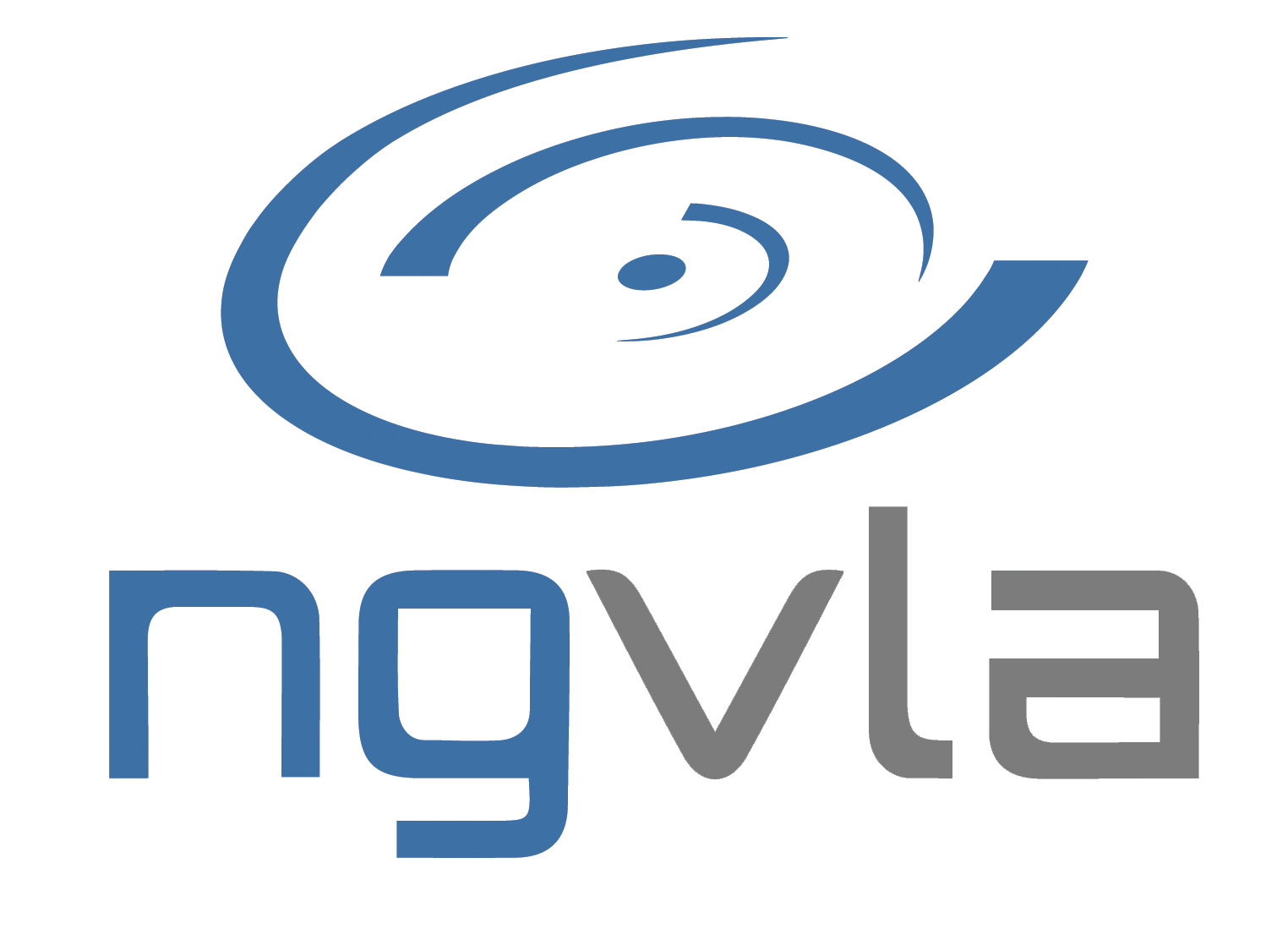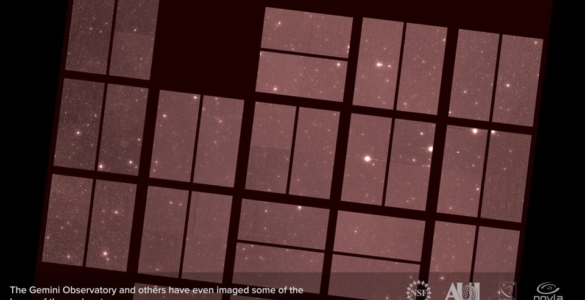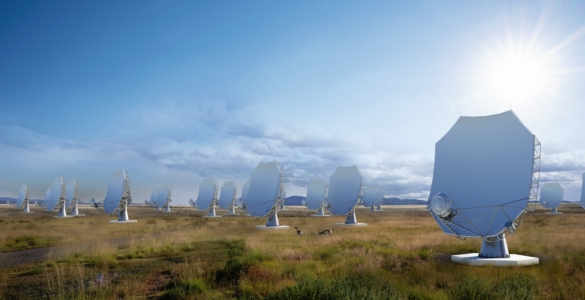The Next Generation Very Large Array – ngVLA
New Technologies, New Possibilities

What is the ngVLA? Why does it matter to science?
Introduction: Designing an Instrument to Reveal the Hidden Universe
In the 1970s the Very Large Array (VLA) was imagined as an array of 27 82-foot (25-meter) dishes arranged in a “Y” shape. More than 3,000 researchers from around the world have used the VLA for more than 11,000 different observing projects. The VLA has had a major impact on nearly every branch of astronomy, and the results of the research it has made possible are abundant in the pages of scientific journals and textbooks. More than 200 Ph.D. degrees have been awarded on the basis of research done with the VLA.
In the 21st century, astronomers are imagining the next generation Very Large Array (ngVLA) with 244, 59-foot (18-meter) dishes spread over 5,505 miles (8,860 km). An additional 19 twenty foot (6m) dishes will make up a short-spacing array at the heart of the telescope. These choices are not arbitrary. By engaging the larger astronomical community, a consensus has been arrived at. This is the observatory needed to address some of the biggest science questions that radio astronomy can help answer. Several of those are listed below, but perhaps the most exciting are those we haven’t even thought of yet.
How Solar Systems are Formed
Since 1995, we have had evidence that there are planets around other stars. Using a variety of methods, over 3,700 planets have been confirmed in over 2,700 star systems. We can see gaps in the dusty disks around young stars, but the unprecedented sensitivity and resolution of ngVLA, at wavelengths that can see through the dust, will help us answer the questions: How do planets form? What are they made of? Do they contain the building blocks of life?
Events that Shake the Universe
Astronomers can now detect gravitational waves caused by the mergers of black holes and neutron stars predicted by Einstein’s general theory of relativity. Once the wave has passed, we’re left with a myriad of questions about the details of the merger, and the place in space where it happened. The ngVLA will greatly advance our ability to study the aftermath of these high-energy events by measuring their energetics and characterizing the environment around the merger.
The Ultimate Black Hole Hunting Machine
Supermassive black holes are the gravitational lynchpins at the center of most galaxies, and they can tell us a lot about the evolution of the universe over cosmic time periods. Black holes are impossible to see because their masses are so concentrated that not even light can escape their gravitational pull. By studying gravity around black holes, astronomers can learn volumes of information about them. Sometimes, a supermassive black hole will emit spectacular jets of particles into its cosmic neighborhood. The ngVLA will help scientists detect these jets — visible in radio wavelengths — by unlocking the secrets that reveal their structure in unprecedented detail.
Revealing the Chemical Foundations for Life
Beginning in the 1970s, observations using radio telescopes revealed that interstellar space is not only full of hydrogen atoms, but also contains complex molecules such as ethanol (alcohol), ethylene glycol (antifreeze), and acetone (nail polish remover). Molecules, like our fingerprints, carry their own particular “signature” and can be identified in interstellar space by the kind of wavelength or energy emitted. Radio telescopes are great at detecting the energy produced in atoms and molecules across the interstellar medium giving scientists important clues to how life may have evolved. Using ngVLA observations, we can transform our understanding of how the seeds of life are made in space and even delivered to other forming planets!
Torrents of Data
With the Next Generation Very Large Array, we are creating new tools to process data in mind-boggling fast ways. Each of the ngVLA’s 244 antennas will collect massive amounts of data and send it simultaneously to a super-fast supercomputer called a correlator. The antennae will accumulate data across 22,000+ baseline combinations to send 6.4 terabytes of data per second back to this powerful central correlator for processing. Each NGVLA data download is equivalent to streaming 7.68 million Netflix movies per hour. The NGVLA’s capability to process data quickly will change the focus of astronomers’ research from finding new celestial sources to spending more time studying known objects in greater detail.













